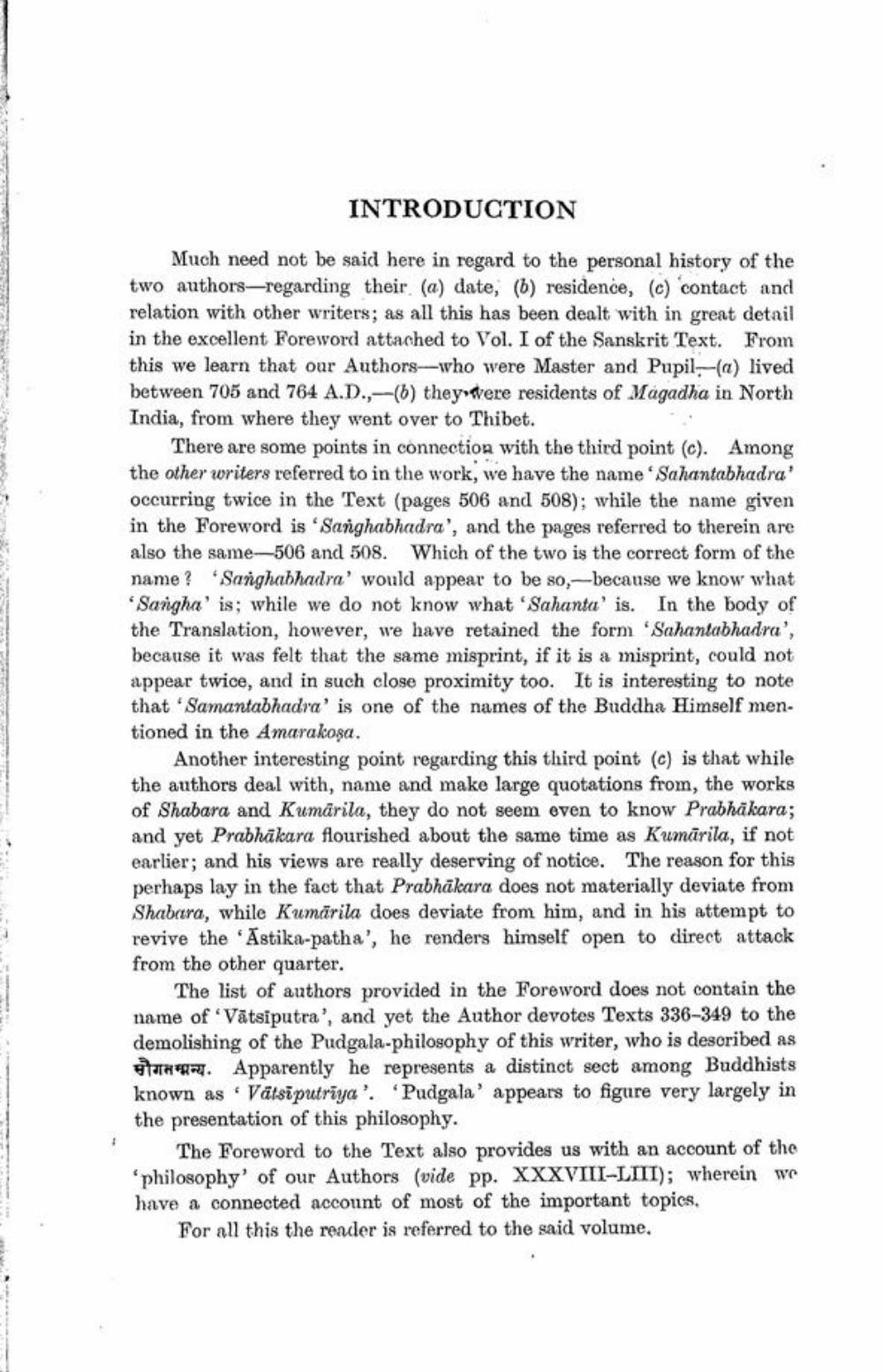Book Title: Tattva Sangraha Vol 2 Author(s): Kamlashila, Ganganatha Jha Publisher: Oriental Research Institute Vadodra View full book textPage 8
________________ INTRODUCTION Much need not be said here in regard to the personal history of the two authors-regarding their (a) date, (b) residenoe, (c) contact and relation with other writers; as all this has been dealt with in great detail in the excellent Foreword attached to Vol. I of the Sanskrit Text. From this we learn that our Authors-who were Master and Pupil - (a) lived between 705 and 764 A.D.,--(b) they were residents of Magadha in North India, from where they went over to Thibet. There are some points in connection with the third point (c). Among the other writers referred to in the work, we have the name Sahantabhadra' occurring twice in the Text (pages 506 and 508): while the name given in the Foreword is 'Sanghabhadra', and the pages referred to therein are also the same-506 and 508. Which of the two is the correct form of the name? Sanghabhadra' would appear to be so, --because we know what 'Sangha' is; while we do not know what 'Sahanta' is. In the body of the Translation, however, we have retained the form 'Sahantabhadra', because it was felt that the same misprint, if it is a misprint, could not appear twice, and in such close proximity too. It is interesting to note that 'Samantabhadra' is one of the names of the Buddha Himself men. tioned in the Amarakosa. Another interesting point regarding this third point (c) is that while the authors deal with, name and make large quotations from, the works of Shabara and Kumarila, they do not seem even to know Prabhākara; and yet Prabhākara flourished about the same time as Kumurila, if not earlier; and his views are really deserving of notice. The reason for this perhaps lay in the fact that Prabhākara does not materially deviate from Shabara, while Kumārila does deviate from him, and in his attempt to revive the 'Astika-patha', he renders himself open to direct attack from the other quarter. The list of authors provided in the Foreword does not contain the name of "Vätsiputra', and yet the Author devotes Texts 336-349 to the demolishing of the Pudgala-philosophy of this writer, who is described as taga. Apparently he represents a distinct sect among Buddhists known as Vätsiputriya'. 'Pudgala' appears to figure very largely in the presentation of this philosophy. The Foreword to the Text also provides us with an account of the philosophy of our Authors (vide pp. XXXVIII-LIII); wherein we have a connected account of most of the important topics. For all this the reader is referred to the said volume, .Page Navigation
1 ... 6 7 8 9 10 11 12 13 14 15 16 17 18 19 20 21 22 23 24 25 26 27 28 29 30 31 32 33 34 35 36 37 38 39 40 41 42 43 44 45 46 47 48 49 50 51 52 53 54 55 56 57 58 59 60 61 62 63 64 65 66 67 68 69 70 71 72 73 74 75 76 77 78 79 80 81 82 ... 887
